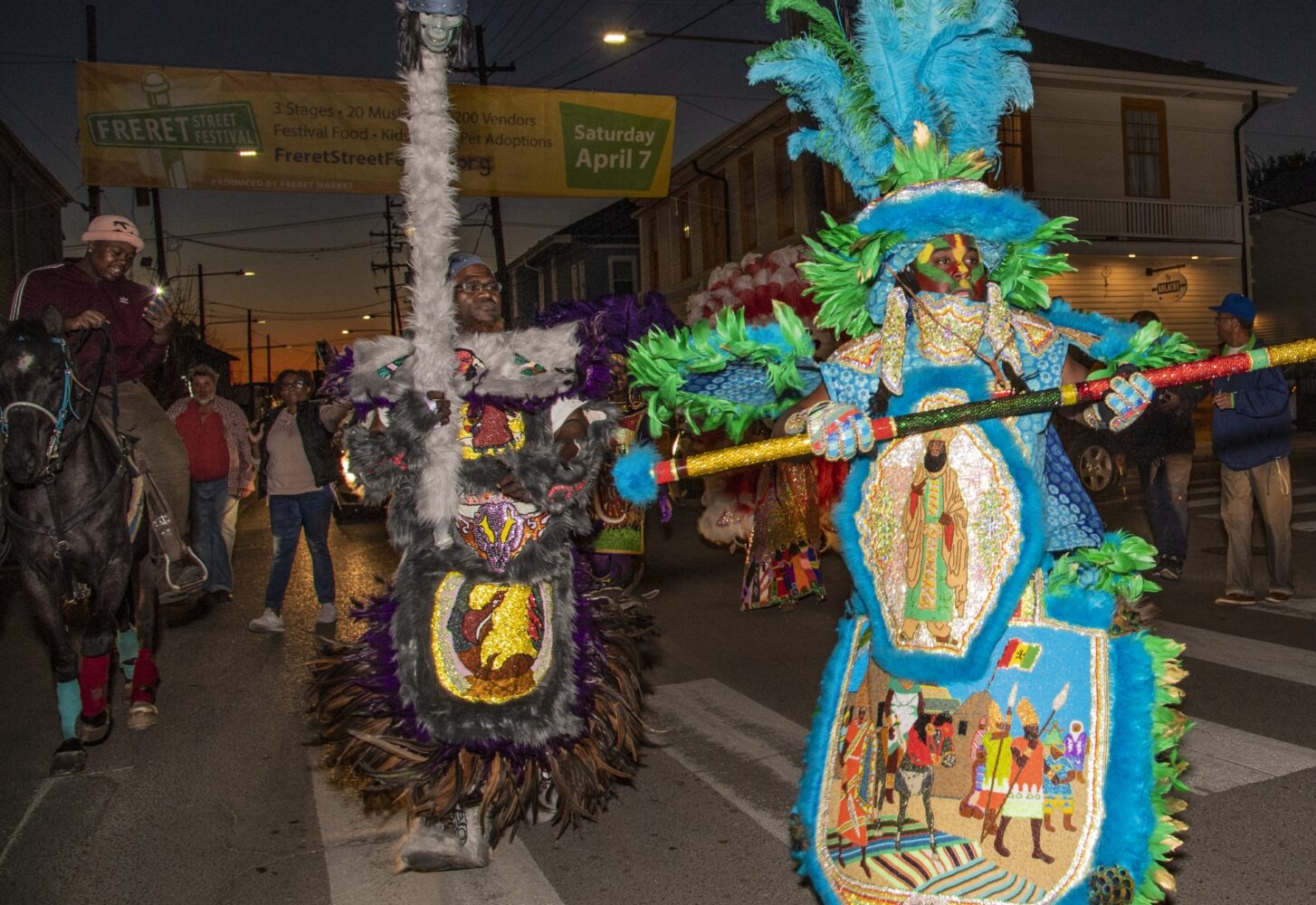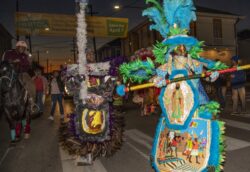Summer 2021
Mystery in Motion
African American masking and spirituality in Mardi Gras
Published: May 27, 2021
Last Updated: August 31, 2021

Photo by Erika Goldring
Floyd Edwards (right), Spy Boy of the Golden Eagles, wears his suit honoring Mansa Musa, the fourteenth-century ruler of the Islamic Mali empire. The tribe’s Wild Man, Charlie Martin, follows Edwards.
African Americans in New Orleans have long used Mardi Gras as the framework for spiritual expressions drawn from African, Islamic, Native American, and European systems of belief. Mystery in Motion celebrates how Black masking Indians, skeleton gangs, Baby Dolls, and the traditional parade krewes Oshun and Nefertiti incorporate spiritual themes from a variety of sources to create profound Mardi Gras masks, costumes, and rituals grounded in shared experience. “There is so much happening on Mardi Gras day, it is impossible to take in all the sights, sounds, and experiences. The intent of the exhibition is to offer an opportunity to contemplate the spiritual dimensions of African American Mardi Gras masking that are hidden in plain view,” says guest curator Kim Vaz-Deville.
The exhibition features Black masking Indian suits on loan from their creators. For example, Big Chief Alfred Doucette’s Marie Laveau suit depicts the Voodoo queen’s tomb in St. Louis Cemetery No. 1 surrounded by the Spy Boy, Wild Man, and Flag Boy of Doucette’s tribe, the Flaming Arrows, awakening her spirit on Mardi Gras morning. Golden Eagles Spy Boy Floyd Edwards’s tribute to Mansa Musa, the fourteenth-century emperor of the Islamic Mali empire points to recent Islamic inspirations. Spiritual healing traditions inform the suits of the Mystic Medicine Man, who looks to both the Kongolese nganga and the Haitian Vodou Erzulie family of spirits, and Janet “Sula” Evans, Medicine Woman of the Spirit of Fi Yi Yi and the Mandingo Warriors, who based her 2018 suit on the West African orisha (spirit) of Nana Baruku.
Mystery in Motion is on display in New Orleans through November 28, 2021. After the exhibition’s run at the Presbytère, it will become part of a larger exhibition, Les Black Indians de la Nouvelle-Orléans, at the Musée du Quai Branly–Jacques Chirac, scheduled to open in fall 2022. For more information about the exhibition and associated programming, visit louisianastatemuseum.org.
This exhibition is funded in part under a grant from the Louisiana Endowment for the Humanities, a state affiliate of the National Endowment for the Humanities. The views, findings, conclusions, or recommendations expressed in this exhibition do not necessarily represent those of either the Louisiana Endowment for the Humanities or the National Endowment for the Humanities.
